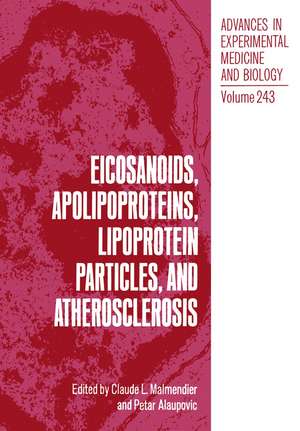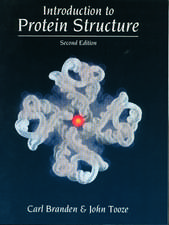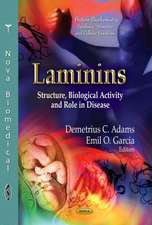Eicosanoids, Apolipoproteins, Lipoprotein Particles, and Atherosclerosis: Advances in Experimental Medicine and Biology, cartea 243
Editat de Claude L. Malmendier, Petar Alaupovicen Limba Engleză Paperback – 18 oct 2011
Din seria Advances in Experimental Medicine and Biology
- 9%
 Preț: 719.60 lei
Preț: 719.60 lei - 20%
 Preț: 691.93 lei
Preț: 691.93 lei - 5%
 Preț: 717.00 lei
Preț: 717.00 lei - 5%
 Preț: 716.28 lei
Preț: 716.28 lei - 5%
 Preț: 717.20 lei
Preț: 717.20 lei - 15%
 Preț: 640.24 lei
Preț: 640.24 lei - 5%
 Preț: 1113.83 lei
Preț: 1113.83 lei - 5%
 Preț: 715.71 lei
Preț: 715.71 lei - 5%
 Preț: 820.43 lei
Preț: 820.43 lei - 15%
 Preț: 641.38 lei
Preț: 641.38 lei - 5%
 Preț: 716.28 lei
Preț: 716.28 lei - 5%
 Preț: 523.99 lei
Preț: 523.99 lei - 5%
 Preț: 1031.00 lei
Preț: 1031.00 lei - 5%
 Preț: 717.00 lei
Preț: 717.00 lei - 5%
 Preț: 715.35 lei
Preț: 715.35 lei - 20%
 Preț: 1161.71 lei
Preț: 1161.71 lei - 5%
 Preț: 1170.51 lei
Preț: 1170.51 lei - 18%
 Preț: 1119.87 lei
Preț: 1119.87 lei - 5%
 Preț: 1288.48 lei
Preț: 1288.48 lei - 5%
 Preț: 1164.67 lei
Preț: 1164.67 lei - 5%
 Preț: 1101.73 lei
Preț: 1101.73 lei - 18%
 Preț: 1123.67 lei
Preț: 1123.67 lei - 5%
 Preț: 1435.64 lei
Preț: 1435.64 lei - 20%
 Preț: 1044.10 lei
Preț: 1044.10 lei - 18%
 Preț: 946.39 lei
Preț: 946.39 lei - 5%
 Preț: 292.57 lei
Preț: 292.57 lei - 18%
 Preț: 957.62 lei
Preț: 957.62 lei - 18%
 Preț: 1235.76 lei
Preț: 1235.76 lei - 5%
 Preț: 1231.55 lei
Preț: 1231.55 lei - 5%
 Preț: 1292.30 lei
Preț: 1292.30 lei - 5%
 Preț: 1102.10 lei
Preț: 1102.10 lei - 18%
 Preț: 1132.81 lei
Preț: 1132.81 lei - 5%
 Preț: 1165.19 lei
Preț: 1165.19 lei - 5%
 Preț: 1418.48 lei
Preț: 1418.48 lei - 5%
 Preț: 1305.63 lei
Preț: 1305.63 lei - 18%
 Preț: 1417.72 lei
Preț: 1417.72 lei - 18%
 Preț: 1412.99 lei
Preț: 1412.99 lei - 24%
 Preț: 806.16 lei
Preț: 806.16 lei - 18%
 Preț: 1243.29 lei
Preț: 1243.29 lei - 5%
 Preț: 1429.44 lei
Preț: 1429.44 lei - 5%
 Preț: 1618.70 lei
Preț: 1618.70 lei - 5%
 Preț: 1305.12 lei
Preț: 1305.12 lei - 18%
 Preț: 1124.92 lei
Preț: 1124.92 lei - 5%
 Preț: 1097.54 lei
Preț: 1097.54 lei - 15%
 Preț: 649.87 lei
Preț: 649.87 lei - 5%
 Preț: 1097.54 lei
Preț: 1097.54 lei - 18%
 Preț: 945.79 lei
Preț: 945.79 lei - 5%
 Preț: 1123.16 lei
Preț: 1123.16 lei
Preț: 395.85 lei
Nou
Puncte Express: 594
Preț estimativ în valută:
75.76€ • 78.80$ • 62.54£
75.76€ • 78.80$ • 62.54£
Carte tipărită la comandă
Livrare economică 14-28 aprilie
Preluare comenzi: 021 569.72.76
Specificații
ISBN-13: 9781461280552
ISBN-10: 1461280559
Pagini: 376
Ilustrații: 362 p.
Dimensiuni: 170 x 244 x 20 mm
Greutate: 0.6 kg
Ediția:1988
Editura: Springer Us
Colecția Springer
Seria Advances in Experimental Medicine and Biology
Locul publicării:New York, NY, United States
ISBN-10: 1461280559
Pagini: 376
Ilustrații: 362 p.
Dimensiuni: 170 x 244 x 20 mm
Greutate: 0.6 kg
Ediția:1988
Editura: Springer Us
Colecția Springer
Seria Advances in Experimental Medicine and Biology
Locul publicării:New York, NY, United States
Public țintă
ResearchCuprins
Eicosanoids.- Prostacyclin, EDRF and Atherosclerosis.- Control of Prostacyclin Production by Vascular Cells: Role of Adenine Nucleotides and Serotonin.- Prostacyclin and Atherosclerosis — Experimental and Clinical Approaches.- Platelet-Neutrophil Interactions in the Eicosanoid Pathway.- Arterial Cell Interactions: Mechanistic Studies Related to Eicosanoid and Growth Factor-Induced Alterations in Cholesterol Metabolism.- Effects of Plasma Lipoproteins on Eicosanoid Metabolism by Cultured Vascular Smooth Muscle Cells.- Eicosanoid Synthesis in Platelet-Derived Growth Factor-Stimulated Fibroblasts.- Genetics of Apolipoproteins.- Genetic HDL Deficiency States.- Apolipoprotein A-I: Deficiency in Tangier Disease.- Apolipoprotein C-II Deficiencies: In Vivo Models for Assessing the Significance of Defective Lipolysis on Lipoprotein Metabolism 7.- Genetic Variation in the Apolipoproteins C-II and C – III.- The Effect of Apolipoprotein E Allele Substitutions on Plasma Lipid and Apolipoprotein Levels.- Molecular Genetics of Coronary Heart Disease.- STRUCTURE OF APOLIPOPROTEINS AND LIPOPROTEINS.- Molecular Biology of Human Apolipoprotein B and Related Diseases.- Secondary and Tertiary Structure of Apolipoproteins.- Prediction of the Tertiary Structure of Apolipoprotein A-II by Computer Modeling.- Relationship between Structure and Metabolism of HDL Apolipoproteins: Study with Synthetic Peptides.- Heterogeneity in the Conformation of Apo A-I on the Surface of HDL Particles.- Structural Properties of the Heparin-Binding Domains of Human Apolipoprotein E.- Characterization and Metabolism of Glycated High Density Lipoproteins in Diabetic Patients.- Control of Spontaneous Lipid and Protein Transport.- Modifications in the Chemical Composition and Thermometric Behavior of LDL and HDLby Probucol in Type Ila Hyperlipoproteinemia.- Acute Phase Apolipoproteins.- Serum Amyloid A (SAA) — The Precursor of Protein AA in Secondary Amyloidosis.- Modulation of Serum Amyloid A Gene Expression by Cytokines and Bacterial Cell Wall Components.- Protein S and SAA : Genetics, Structure and Metabolism. Are They Apolipoproteins and Identical?.- LIPID TRANSFER PROTEINS.- Plasma Cholesteryl Ester and Phospholipid Transfer Proteins and Their Regulation.- The Human Plasma Cholesteryl Ester Transfer Protein: Structure, Function and Physiology.- Cholesterol Ester Transfer Protein. Characterization of Monoclonal Antibodies against the Human Antigen.- Cholesterol Esterification and Net Mass Transfer of Cholesterylesters and Triglycerides in Plasma from \ Healthy Subjects and Hyperlipidemic Coronary Heart Disease Patients.- Lecithin: Cholesterol Acyltransferase and Its Action on Different Substrates.- In Vivo Evidence for Cholesterol Ester and Triglyceride Exchange between High Density Lipoprotein and Infused Triglyceride Rich Particles in Abetalipoproteinemia 2.- Enhanced Cholesteryl Ester Transfer Activity in Cyclophosphamide-Treated Rabbits: Relationship with Lipolytic Enzymes.- Role of Apolipoprotein A IV in the Interconversion of HDL Subclasses.- LIPOPROTEIN PARTICLES.- HDL Receptor and Reverse Cholesterol Transport in Adipose Cells.- Molecular Analysis of Atherogenic Lipoprotein Particles in Adequately Controlled Type I Diabetes Mellitus.- Quantitative Abnormalities of Lipoprotein Particles in Chronic Hemodialysis Patients....283.- HYPERTRIGLYCERIDEMIA.- Lipoprotein Particles in Hypertriglyceridemic States.- In Vivo Metabolism of Apolipoproteins C-II and C-III in Normal and Hypertriglyceridemic Sub jects.- Pathogenesis of Hypertriglyceridemia: Implications forCoronary Heart Disease and Therapy.- Increased VLDL.- Exchange and Transfer of Apolipoproteins and Lipids: Impact on Lipoprotein Metabolism.- Hypertriglyceridemia and Omega-3 Fatty Acids.- Contributors.













